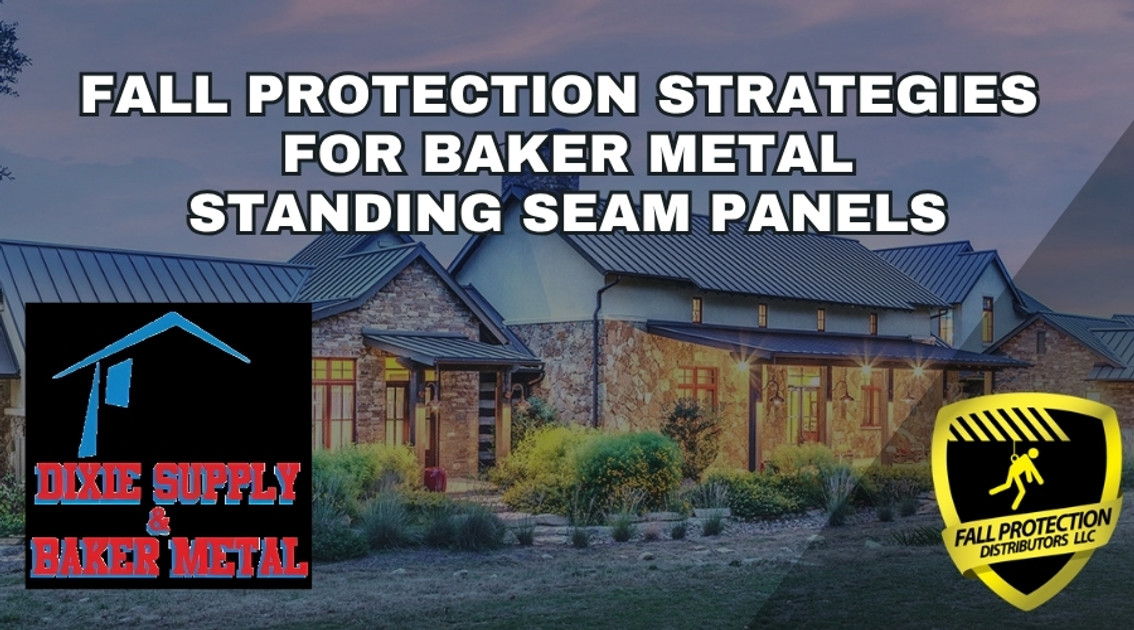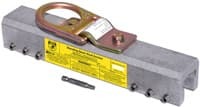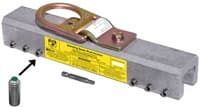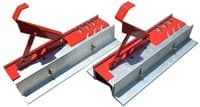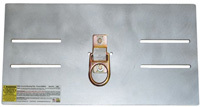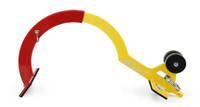Fall Protection Strategies For Baker Metal Works Roofs
Posted by Howie Scarboro - CEO Fall Protection Distributors, LLC on Jul 23rd 2025
See the Roof Anchor Compatibility Chart for Baker Metal Works Standing Seam Panels.
Who Is Baker Metal Works??
Baker Metal Works & Supply has been helping contractors and homeowners get the roofing materials they need since 1989.
Based in Baker, Florida, the company began as a small sheet metal shop and has grown into a trusted name for metal roofing throughout the Southeast. Today, they operate seven locations across Florida and Alabama, offering direct-to-jobsite deliveries and quick pickup options for custom orders.
The company specializes in manufacturing steel roofing and siding products that withstand the elements. They produce everything from standing seam and corrugated panels to trim packages and complete pole barn kits. Most of their products are made from American steel and built with durability in mind. Although they don't offer installation services, their team works closely with builders and contractors to make sure every order fits the job. Whether it's a custom color, a specific panel length, or a fast turnaround, Baker Metal has earned a reputation for delivering results.
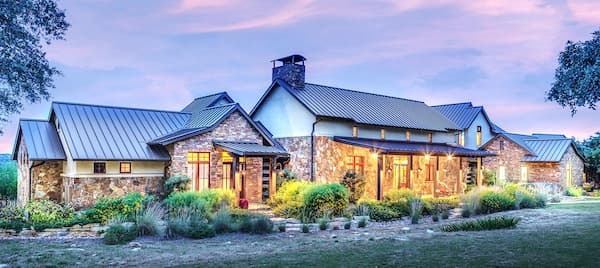
Why Do Compatible Fall Protection Anchors Matter on Standing Seam Roofs?
Working on a standing seam roof comes with its own set of challenges.
These panels withstand harsh environments while maintaining a clean appearance, featuring raised seams that allow for expansion and provide a weathertight seal. But those same features make fall protection a bit more complicated. You can't just screw in an anchor and hope for the best. That kind of shortcut can void warranties, damage the panel, or even cause leaks down the road.
To stay safe and keep the roof intact, you need anchors that match the panel system. Most standing seam roofs require non-penetrating solutions that clamp directly to the seams without creating holes in the metal. But not every anchor fits every seam. Using the wrong product can lead to loose connections, distorted seams, or worse—an anchor that fails when someone falls.
The right anchor will match the panel profile and grip it securely without slipping or crushing the metal. It should provide a solid tie-off point that meets OSHA standards without compromising the integrity of the roof system. That's why it's essential to know precisely which panel you're working with before choosing your fall protection setup. A good anchor protects the worker and preserves the roof at the same time. Anything less is asking for trouble.
Non-Striated 1-inch Snaplock

Baker Metal's Non-Striated 1-Inch Snaplock panel offers a clean, modern look with straightforward installation.
These panels connect with a Snaplock-style seam that secures without the need for mechanical seaming tools. Because the fasteners remain hidden beneath the panel surface, the result is a weathertight finish with no exposed screws. This panel is available by special order in 24-gauge steel and comes in either 12-inch or 16-inch widths. The smooth, non-striated face provides a sleek appearance that suits residential or light commercial applications well. The shape of the seam is compatible with the following products. See the Roof Anchor Compatibility Chart for Non-Striated 1-inch Snaplock Baker Metal Works Standing Seam Panels.
Fall Protection for Non-Striated 1-Inch Snaplock
When working on 24-gauge steel versions of this panel, crews can utilize several non-penetrating fall protection options.
The SSRA1 Seam Anchor clamps directly to the seam without drilling or modifying the panel. It uses a set of twelve stainless steel set screws to provide a secure tie-off point rated to withstand fall arrest forces. The D-ring is removable, allowing adapter plates to be mounted and expanding the functionality of the SSRA1.
To add stability for steep roofs, the SSRA2 Adjustable Roof Jack Adapter mounts on top of the SSRA1 anchor. It provides a 10-foot wooden flat and level walking surface for workers. These innovative roof jacks are unique in the industry, as they are the only solution that adjusts for both pitch and seam height. The height-adjustable padded side legs stabilize the seams and walkboards.
For projects requiring maximum worker mobility, the SSRA3 Anchor Plate mounts on top of two SSRA1 anchors. It includes a D-ring connection point for temporary horizontal lifelines. The wide grooves in the Anchor Plates allow for various seam widths, ranging from 12 to 24 inches. The SSRA3 plate provides a reliable tie-off for workers or ropes, leaving no penetrations through the panels.
For panel materials other than 24-gauge steel, including lighter gauges, aluminum, or other metals, the Ridge Pro Steep Assist is often the safest option. This adjustable anchor hooks over the peak of the roof, allowing workers to tie off while climbing or walking on slopes with inclinations ranging from 6/12 to 12/12. It's a practical solution when seam-mounted anchors are not suitable. The RidgePro has a unique ability to provide 100% worker tie-off from the ladder to the peak.
Contractors planning to install horizontal lifeline systems have two options. The Super Anchor 120-foot Permanent Horizontal Lifeline kit offers a long-term solution for roofs that see regular foot traffic. For temporary use, the SSRA HLL Kit includes four SSRA1 anchors, two SSRA3 anchor plates, and a 100-foot Malta Dynamics rope lifeline. This combination creates a fully portable, OSHA-compliant system that protects workers across the length of the roof without compromising the panels beneath them.
We always recommend testing the fit of the SSRA1 anchor before the workday to confirm compatibility. If the seam is incompatible, an alternative solution may be necessary.
Striated 1-Inch Snaplock

The Striated 1-Inch Snaplock panel from Baker Metal features the same Snaplock seam connection as the non-striated version.
Still, it adds shallow striations across the face of the panel. These striations help reduce oil canning and provide a more textured appearance. Made from 24-gauge steel and available in a 16-inch width, this panel installs easily using concealed fasteners. The Snaplock design eliminates the need for mechanical seaming tools, resulting in a clean, weathertight finish. These panels are available by special order and work well for residential or light commercial projects. The shape of the seam is compatible with the following safety products. See the Roof Anchor Compatibility Chart for Baker Metal Works Striated 1-Inch Snaplock Standing Seam Panels.
Fall Protection for Striated 1-Inch Snaplock
Crews working on 24-gauge steel versions of this panel can use several non-penetrating fall protection solutions that maintain the integrity of the roof system.
The SSRA1 Seam Anchor clamps securely onto the seam using twelve stainless steel set screws. This assembly creates a tie-off point that meets fall arrest strength requirements without damaging the panel. The D-ring is removable, allowing workers to utilize additional adapter plates as needed.
For stable footing on steeper slopes, the SSRA2 Adjustable Roof Jack Adapter mounts on top of the SSRA1 anchor. This adapter supports a 10-foot wooden walkboard, providing a stable surface for workers to use. The SSRA2 Roof Jack Adapters allow for adjustable roof pitch and seam heights.
For longer spans or projects where workers need to move along the roof, the SSRA3 Anchor Plate mounts across two SSRA1 anchors and includes a D-ring for connecting a temporary horizontal lifeline, suitable for seam widths ranging from 12 to 24 inches. This setup creates a secure tie-off point across the working area without making any holes in the roofing system.
For materials other than 24-gauge steel, such as aluminum or thinner-gauge panels, the Ridge Pro Steep Assist is often the best option for slopes ranging from 6:12 to 12:12. The Ridge Pro hooks over the roof peak, providing workers with a continuous tie-off point from the ladder to the ridge. It is ideal when seam-mounted anchors are not suitable.
If a horizontal lifeline system is required, there are two strong options. The Super Anchor 120-foot Permanent Horizontal Lifeline kit is well-suited for roofs that experience regular traffic. For temporary jobs, the SSRA HLL Kit includes four SSRA1 anchors, two SSRA3 anchor plates, and a 100-foot Malta Dynamics rope lifeline. This comprehensive system provides workers with full mobility while preserving the roof beneath them.
We always recommend testing the fit of the SSRA1 anchor before the workday to confirm compatibility. If the seam is incompatible, an alternative solution may be necessary.
Metal Roof Anchor Panel Compatibility For Baker Metal Works
| Non-Striated 1-inch Snaplock 24 Gauge |
Striated 1-Inch Snaplock 24 Gauge |
|
|---|---|---|
| YES | YES | |
| YES | YES | |
| YES | YES | |
| YES | YES | |
| YES | YES |
Contact Us For More Information
For further details on roofing solutions and fall protection systems, please contact us at 863-703-4522 or visit www.StandingSeamRoofAnchor.com. Let's work together to make your roofing projects safe, beautiful, and built to last. For more safety tips, refer to OSHA's 48-page Fall Protection Manual. Once you have determined the most suitable anchors for your roof system, download our free Anchor Inspection Form.
Safety Tips For Standing Seam Roofs
Use Specialized Anchor Systems for Standing Seam Roofs
Standing seam panels stay watertight and thermally expand and contract, which means they don't respond well to holes or screws. Old-school anchors that rely on penetrating fasteners can deform the seams, void warranties, and lead to costly repairs. Seam-mounted anchors are a more innovative alternative. These systems clamp directly to the seam without damaging the panel, while still providing a certified tie-off point. Selecting the right anchor ensures the protection of both your crew and the roof system simultaneously.
Equip Workers with High Quality Safety Gear
A harness is only helpful if it's actually worn—and worn correctly. Crews require gear that fits well, feels comfortable during extended shifts, and withstands daily wear and tear. From harnesses and SRLs to energy absorbers and anchors, the gear should meet OSHA requirements while also functioning effectively in the real world. The more comfortable and reliable it is, the more likely it is to be used by workers.
Consult Experts for Curved Metal Panels
Curved roofs may look sleek, but they come with unique safety challenges. Their geometry can make typical anchors unsafe or ineffective. Force from a fall doesn't distribute the same way on a curved seam as it does on a flat one. Before working on any curved panel system, bring in a fall protection specialist. They'll help you choose equipment that works with the roof—not against it.
Encourage the Use of Trauma Straps
A harness may stop a worker's fall, but the danger doesn't always end there. Hanging motionless in a harness can cut off circulation and lead to suspension trauma within minutes. Trauma straps allow a fallen worker to shift their weight and relieve pressure on their legs. They're small, simple, and inexpensive—but in a rescue scenario, they can be the difference between recovery and tragedy.
Set Up Protective Guardrail Barriers for Work Zones
Sometimes, a tie-off isn't possible for every task. That's where guardrails step in. Whether it's around a skylight, an open hatch, or near the roof edge, guardrails act as a physical and visual reminder of the danger zone. Installed correctly, they provide crews with the freedom to move while still staying protected.
Prioritize Ladder Safety Training
It's easy to overlook ladder safety, but the risks are real. Every worker should know how to choose the right ladder, inspect it for damage, and set it up using the correct 4-1 ratio. A steady base, clean footwear, and three points of contact go a long way in preventing slips. One quick toolbox talk at the start of the job can make sure no one learns ladder safety the hard way.
Install Permanent Roof Anchor Systems
If a roof sees regular maintenance or inspections, relying on temporary anchors every time can create more problems than it solves. Permanent anchors provide fixed tie-off points that are always ready when needed. They save setup time, reduce wear and tear on the panels, and help ensure that every crew has the tools to work safely on day one.
Develop OSHA Compliant Safety Plans
A good safety plan isn't just paperwork for the file cabinet. It's a shared document that outlines the risks, how to respond in an emergency, and who's responsible for what. The best plans are reviewed often and communicated clearly, so everyone on the team knows what to do and how to stay safe.
Ensure Proper Footwear for Stability
Grip starts from the ground up. On a metal roof, especially one with morning dew or afternoon heat, the wrong shoes can be a hazard. Crews should wear boots with slip-resistant soles and solid ankle support that still allow enough flexibility to move naturally. The proper footwear can make the difference between staying balanced and taking a slide.
Disclaimer
The views, recommendations, and information presented in this blog are solely those of the author and do not necessarily reflect the opinions or positions of the featured panel manufacturer, its brands, subsidiaries, or parent companies. Customers are strongly encouraged to contact the roof panel manufacturer directly for inquiries regarding fall protection compatibility with their products and to address any potential warranty issues that may arise after installing our products.

